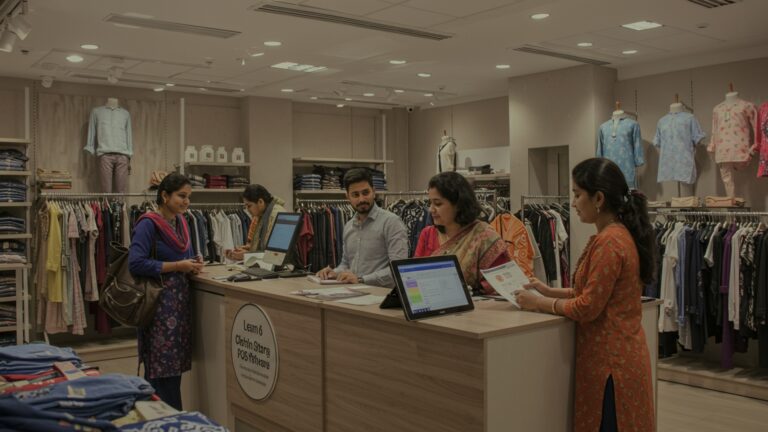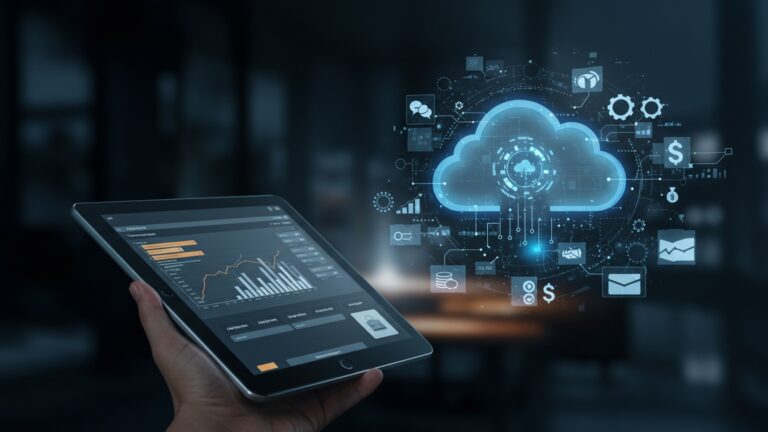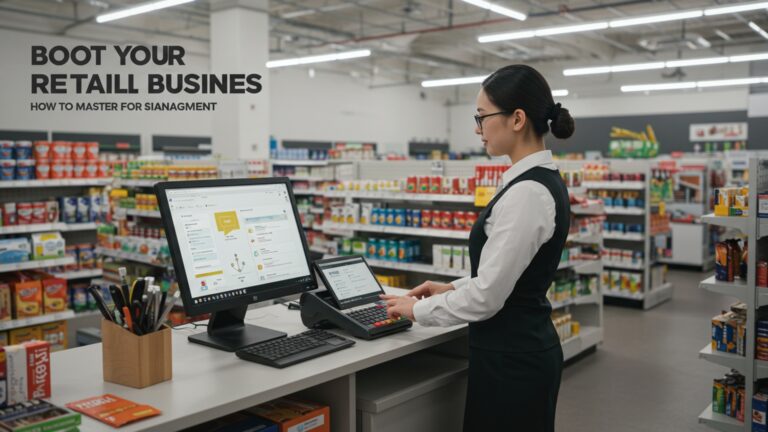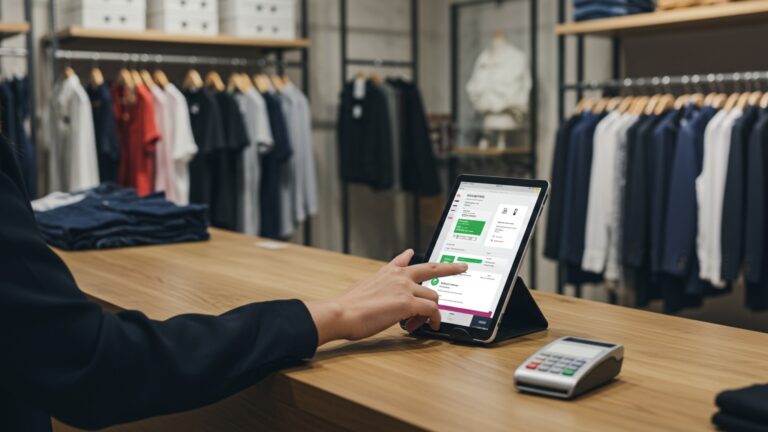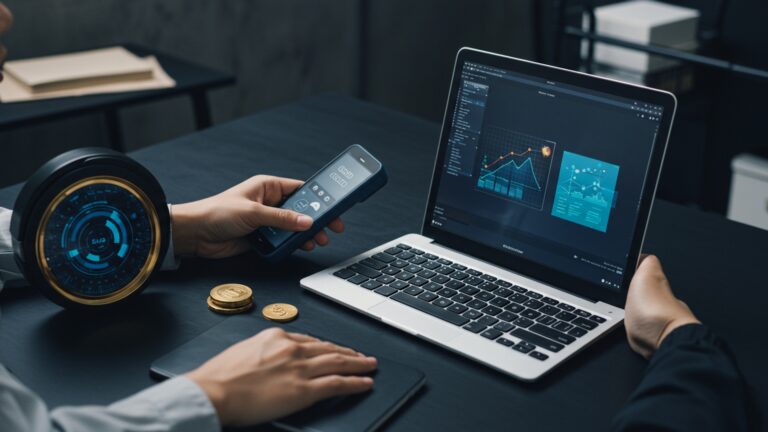How to Maximize Retail Sales With Powerful POS Software
The contemporary retail landscape demands intelligent operations, far beyond mere transaction processing. Powerful pos software for retail now acts as the central nervous system for businesses, expertly navigating intense competition and evolving customer expectations. It integrates real-time inventory management, preventing costly stockouts and overstock, with robust CRM capabilities that fuel personalized marketing campaigns and loyalty programs. Recent innovations, including AI-powered sales forecasting and seamless omnichannel fulfillment like BOPIS (Buy Online, Pick Up In Store), transform raw sales data into actionable intelligence. This strategic technological advantage is essential for maximizing every sales opportunity, optimizing operational efficiency. cultivating exceptional customer experiences in today’s dynamic market.
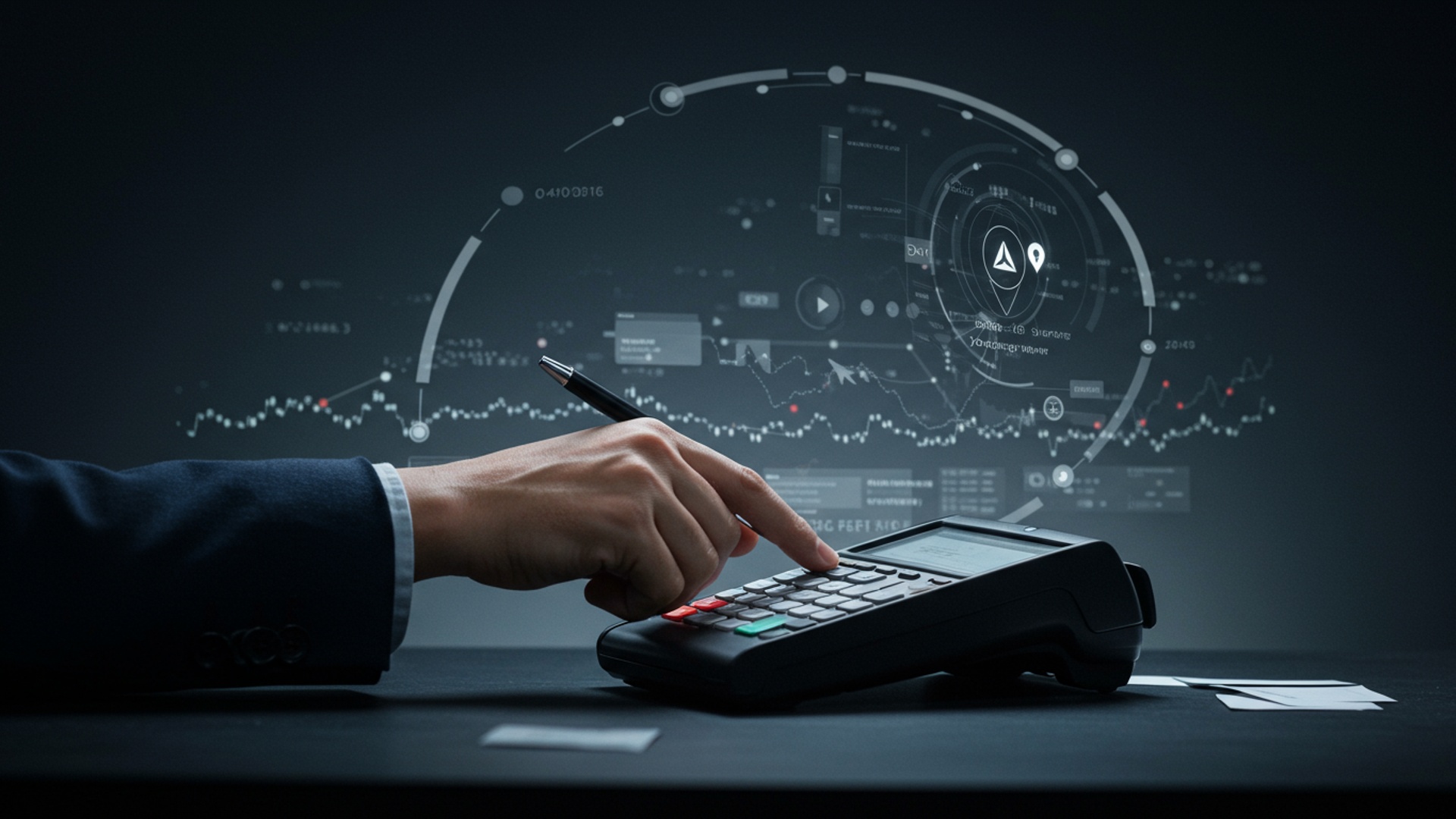
The Evolution of Point-of-Sale: Beyond Simple Transactions
In today’s dynamic retail landscape, the concept of a Point of Sale (POS) has evolved far beyond a simple cash register. What was once merely a terminal for processing payments has transformed into a sophisticated, integrated system, acting as the central nervous system of a modern retail operation. Understanding this evolution is crucial for any business aiming to thrive. At its core, POS software for retail is the technological backbone that facilitates transactions, manages inventory, tracks customer data. provides invaluable insights into sales performance. It’s the engine driving efficiency and growth, especially as consumer expectations for seamless shopping experiences continue to rise.
Retailers today face myriad challenges: intense competition, fluctuating consumer demand, the rise of e-commerce. the need for personalized customer interactions. A robust POS system addresses these challenges head-on by automating processes, unifying data. empowering staff. It’s no longer just about completing a sale; it’s about optimizing every touchpoint of the customer journey and streamlining back-office operations.
Core Capabilities of Powerful POS Software for Retail Success
To truly maximize sales, a POS software for retail must offer a comprehensive suite of features. These aren’t just add-ons; they are fundamental components that collectively elevate a retail business.
- Advanced Inventory Management
- Seamless Sales and Transaction Processing
- Integrated Customer Relationship Management (CRM)
- Efficient Employee Management
- Comprehensive Reporting and Analytics
- Robust Integration Capabilities
This goes beyond simply counting products. A powerful POS system tracks inventory levels in real-time across multiple locations, manages stock transfers, handles returns. automates reorder points. It can categorize products, manage variants (size, color). track supplier details. This precision minimizes stockouts, reduces overstocking. optimizes carrying costs.
At the heart of any POS, this feature ensures quick, accurate. secure transactions. It supports various payment methods (cash, credit/debit cards, mobile payments, gift cards), applies discounts and promotions, handles layaways. processes returns/exchanges efficiently. Modern systems often include customizable receipt options and email receipts for customer convenience.
A powerful POS software for retail acts as a central hub for customer data. It captures purchase history, contact data, loyalty program enrollments. preferences. This allows retailers to build detailed customer profiles, segment audiences. tailor marketing efforts, fostering loyalty and repeat business.
From time clock functionality and shift scheduling to sales performance tracking and commission calculations, POS software empowers managers. It can assign user roles and permissions, ensuring data security and operational integrity. This visibility helps identify top performers and areas for staff training.
This is where raw data transforms into actionable intelligence. Powerful POS systems generate detailed reports on sales trends, product performance, customer demographics, peak hours. employee productivity. These insights are critical for strategic planning, merchandising decisions. identifying growth opportunities.
A truly powerful POS doesn’t operate in a vacuum. It seamlessly integrates with other vital business tools, such as e-commerce platforms (for an omnichannel experience), accounting software (like QuickBooks or Xero), marketing automation tools. third-party loyalty programs. This interconnectedness ensures data consistency and eliminates manual data entry, saving time and reducing errors.
How POS Software Directly Drives Sales Growth
The features outlined above aren’t just about operational efficiency; they directly translate into increased sales and profitability. Let’s explore some real-world applications:
- Streamlined Checkout and Enhanced Customer Experience
- Optimized Inventory Prevents Lost Sales
- Personalized Customer Engagements and Loyalty
- Data-Driven Decision Making
- Seamless Omnichannel Experience
Imagine a busy holiday season. A fast, intuitive POS system drastically reduces queue times, preventing impatient customers from abandoning their carts. Features like barcode scanning, quick payment processing. digital receipts create a smooth, modern experience. A retailer using an outdated system, like “Boutique Elegance” in a high-traffic mall, upgraded their POS and saw a 15% reduction in average transaction time, directly leading to a higher customer throughput and increased daily sales during peak hours.
Stockouts are silent sales killers. By providing real-time inventory visibility, a powerful POS software for retail ensures popular items are always in stock. Conversely, it helps identify slow-moving products that can be discounted to free up shelf space and capital. For “GearUp Sporting Goods,” implementing a POS with advanced inventory alerts meant they could anticipate demand for seasonal items, avoiding costly stockouts during peak sports seasons and capturing every potential sale.
With CRM integrated into the POS, staff can greet customers by name, access their purchase history. suggest relevant products or promotions at the point of sale. Loyalty programs managed through the POS encourage repeat visits. “Pet Paradise,” a local pet supply store, used their POS to track customer preferences for specific brands of pet food. When a customer purchased a new brand, the system automatically prompted staff to offer a discount on their next purchase of that new brand, reinforcing trial and leading to increased sales of new products.
The rich analytics provided by POS software for retail allow retailers to make informed decisions. Which products are best-sellers? What are the peak sales times? Which marketing campaigns are most effective? This data allows for optimized merchandising, targeted promotions. efficient staff scheduling, all contributing to higher sales. A small bookstore, “The Literary Nook,” used their POS data to discover that their highest sales occurred between 4 PM and 6 PM on weekdays. They adjusted staff schedules and promoted author readings during these hours, resulting in a 20% increase in sales during that specific timeframe.
In an era where customers browse online and buy in-store (or vice-versa), a POS that integrates with e-commerce platforms is indispensable. It ensures consistent inventory, pricing. customer data across all channels. A customer might buy online and pick up in-store, or return an online purchase at a physical location, all facilitated by a unified POS. This smooth customer journey removes friction and encourages purchases, regardless of the channel.
Advanced POS Features That Elevate Retail Performance
Beyond the core functionalities, certain advanced features can provide a significant competitive edge:
- Mobile POS (mPOS)
- AI-Powered Recommendations
- Loss Prevention Tools
- Multi-Store Management
- Returns and Exchanges Management
Using tablets or smartphones, mPOS allows sales associates to process transactions anywhere in the store, reducing lines and enhancing customer interaction on the sales floor. It’s particularly useful for pop-up shops, outdoor markets, or during busy periods.
Some advanced POS software for retail leverages artificial intelligence to suggest complementary products to customers at checkout, based on their purchase history or current selections, much like online retailers do. This cross-selling and upselling capability can significantly boost average transaction value.
Integrated features like employee activity tracking, void/return monitoring. cash drawer reconciliation help identify and prevent internal theft or errors, safeguarding profits.
For retailers with multiple locations, a centralized POS system allows for comprehensive management of inventory, sales, employees. reporting across all stores from a single dashboard, providing a unified view of the entire business.
An efficient system makes returns hassle-free for customers and streamlined for staff. It ensures returned items are correctly re-entered into inventory or handled for disposal. that refunds or exchanges are processed accurately, maintaining customer satisfaction and data integrity.
Choosing the Right POS Software for Your Retail Business
Selecting the ideal POS software for retail requires careful consideration of several factors unique to your business. It’s not a one-size-fits-all solution. Here’s a comparison of key considerations:
| Factor | Consideration Points | Impact on Sales Maximization |
|---|---|---|
| Business Size & Scalability |
|
Ensures the system can grow with your business, preventing costly migrations later and supporting expansion. |
| Industry Specificity |
|
Tailored features streamline specific operations, reduce manual work. enhance industry-specific customer experiences. |
| Budget & Pricing Model |
|
Influences ROI. Cloud-based (SaaS) often has lower upfront costs and regular updates, making it more accessible for many. |
| Cloud-Based vs. On-Premise |
Data stored remotely, accessible anywhere, automatic updates, lower upfront hardware. Data stored locally, full control, higher upfront cost, self-managed updates. |
Cloud-based offers flexibility, data security (often). remote management, critical for modern omnichannel retail and business continuity. |
| Integration Ecosystem |
|
Seamless data flow across systems eliminates silos, improves accuracy. provides a holistic view of the business, directly impacting efficiency and strategic decision-making. |
| Ease of Use & Training |
|
Reduces training time and errors, ensures staff adopt the system quickly. maintains operational efficiency, especially during peak times. |
Implementing and Maximizing Your POS Investment
Acquiring powerful POS software for retail is only the first step. To truly maximize its impact on sales, strategic implementation and ongoing optimization are essential:
- Thorough Staff Training
- Strategic Data Migration
- Leverage All Features
- Regular Review of Reports and Analytics
- Integrate with Other Business Tools
- Stay Updated and Seek Feedback
Your POS system is only as good as the people using it. Invest in comprehensive training for all employees, from new hires to seasoned managers. Ensure they comprehend not just how to use the features. why they are crucial for customer service and sales. Consider regular refresher courses or quick reference guides.
If you’re transitioning from an older system, ensure a meticulous plan for migrating existing inventory, customer. sales data. Accurate data is the foundation of effective reporting and personalized service.
Many retailers only scratch the surface of their POS capabilities. Regularly review all available features, especially the advanced ones like CRM, loyalty programs. detailed reporting. Are you using the system to its full potential to identify trends, manage promotions, or engage customers?
Don’t just generate reports; assess them. Set aside dedicated time weekly or monthly to dive into sales data, inventory movement. customer demographics. Use these insights to adjust purchasing, refine marketing strategies. optimize staffing levels.
Ensure your POS is seamlessly integrated with your e-commerce platform, accounting software. any marketing automation tools. This creates a unified data ecosystem, eliminating manual data entry, reducing errors. providing a holistic view of your business performance.
Technology evolves rapidly. Ensure your POS software for retail is regularly updated to benefit from new features and security enhancements. Encourage staff to provide feedback on the system’s usability and identify areas for improvement.
Consider the case of “Urban Threads,” a boutique apparel store. After implementing a new POS system, they didn’t just stop at processing transactions. They actively used the built-in CRM to segment customers by purchase history and preferred styles. This allowed them to launch targeted email campaigns featuring new arrivals relevant to each segment. Moreover, by analyzing sales reports, they identified their top 10% of products and ensured these were always well-stocked and prominently displayed. Within six months, Urban Threads reported a 22% increase in average transaction value and a 15% growth in their loyalty program enrollment, directly attributable to the intelligent use of their powerful POS software.
Conclusion
Embracing powerful POS software is no longer an option but a strategic imperative for retail growth. It transforms mere transactions into actionable insights, driving smarter decisions and superior customer experiences. I’ve personally witnessed businesses, much like a local apparel store that leveraged real-time sales data to perfectly time their seasonal discounts, realize a significant uplift in revenue. This isn’t about simply ringing up sales; it’s about harnessing every interaction to interpret your customers better and optimize your inventory, a truly unique insight often overlooked. To truly maximize your retail sales, ensure you’re actively diving into the analytics your POS provides, rather than just letting it collect data. For instance, examine peak selling hours to optimize staffing, or identify slow-moving items to clear shelves efficiently. Modern systems now offer AI-driven predictive insights, a recent development that can forecast demand with remarkable accuracy. Therefore, don’t just select any system; choose one that aligns with your specific retail needs to unlock its full potential. For guidance on making that crucial decision, consider how to select the perfect POS software for your retail business needs. Take the leap, invest in comprehensive training for your team. watch your business thrive in an increasingly competitive marketplace.
More Articles
How to Select the Perfect POS Software for Your Retail Business Needs
How to Choose the Best POS Software to Streamline Your Sales
Mastering Cloud Based POS Software How to Boost Your Business Efficiency
How to Select and Implement POS Software A Comprehensive Guide for Business Success
7 Essential Features Your Apparel Store Billing Software Needs to Succeed
FAQs
What’s the big deal with POS software for sales?
It’s essentially your central nervous system for retail. A powerful POS streamlines operations, speeds up checkout. gives you crucial insights into what’s selling and who’s buying. This means less wasted time, happier customers. ultimately, more money in your till.
How does a good POS help me sell more stuff?
It does this in several ways! First, by making transactions super fast and smooth, reducing wait times and customer frustration. Second, it helps with upselling and cross-selling by suggesting related items or promotions at the point of sale. Third, by keeping accurate inventory, you never miss a sale because an item is out of stock when it shouldn’t be.
Can POS software actually improve my customer experience?
Absolutely! A modern POS allows for quick returns/exchanges, personalized recommendations based on past purchases. smooth loyalty program integration. When customers have a hassle-free and tailored shopping experience, they’re more likely to come back and spend more.
What about inventory – does POS help with that to boost sales?
Definitely. Accurate, real-time inventory tracking is a huge sales booster. You avoid stockouts on popular items, reduce overstocking of slow movers. can easily transfer items between locations if you have multiple stores. Knowing exactly what you have on hand means you can always fulfill orders and maximize every potential sale.
Are there features in POS that help with marketing or loyalty?
Yes, many powerful POS systems include robust CRM (Customer Relationship Management) features. This lets you collect customer data, track purchase history. run targeted email campaigns or special offers. You can also easily manage loyalty programs, rewarding frequent shoppers and encouraging repeat business.
How can I use POS data to make better sales decisions?
Your POS collects tons of valuable data on sales trends, popular products, peak shopping times. even employee performance. By analyzing this details, you can make smarter decisions about what to stock, how to price items, when to schedule staff. which promotions will be most effective, all leading to increased sales.
Is it hard to get started with this kind of software?
Not really, especially with modern cloud-based systems. While there’s always a learning curve with new tech, most powerful POS software is designed to be user-friendly with intuitive interfaces. Many providers also offer training and support to help you get up and running quickly, so you can start seeing those sales benefits fast.


